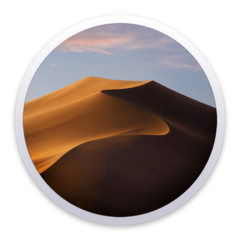D.I. Johnson gave the correct response. You're running High Sierra, 10.13.x. Office 2019 and/or the more recent point releases of Office 365 require Mojave 10.14.x as the minimum OS to run.
MS changed the system requirements for the Mac a couple of years ago. Instead of constantly patching older titles so they'll run under numerous versions of the Mac OS, perpetual license versions, from their release date, now run under three major Mac OS releases. Period.
For example, Office 2011 was released in late 2010. About the same time as Snow Leopard, 10.6.x. MS released updates and patches for it all the way through High Sierra. That's eight years of keeping ancient software going at no cost to the user. Being that generous costs too much for any company. Lots of time and expenses put into all of these patches with no income to cover it. Few new licenses being sold to replace old software that still works.
Per MS' three year rule, Office 2016 will only run under El Capitan 10.11.x through High Sierra 10.13.x. Office 2019 will only run under Mojave 10.14.x through Big Sur 11.x. Because Big Sur is the three year cutoff for 2019, Office 2021 (or 2022, whichever MS calls it), will be released in conjunction with macOS Monterey this fall since Office 2019 will not run under it.
365 somewhat follows the same basic rule. On MS' download page, you can get older versions of 365 - to a point. As you'll see, you can only download as far back as the 16.27 release from July 16, 2019. Not far enough back for High Sierra. Anything older than that is listed, but no downloads are available for those releases.
If you require Office, and you want a perpetual license rather than the 365 subscription, the cheapest option is to get the single user license of 365 now and pay for it $6.99 monthly rather than for a year. Then as soon as Office 2021/2022 is released, purchase that and cancel 365.
But, as D.I. Johnson also already noted, you still have to upgrade the OS on your Mac to at least Mojave before Office can be installed. If you can't upgrade past High Sierra because you have an older Mac, then you'll first have to get a new, or much newer Mac to replace the one you have.
